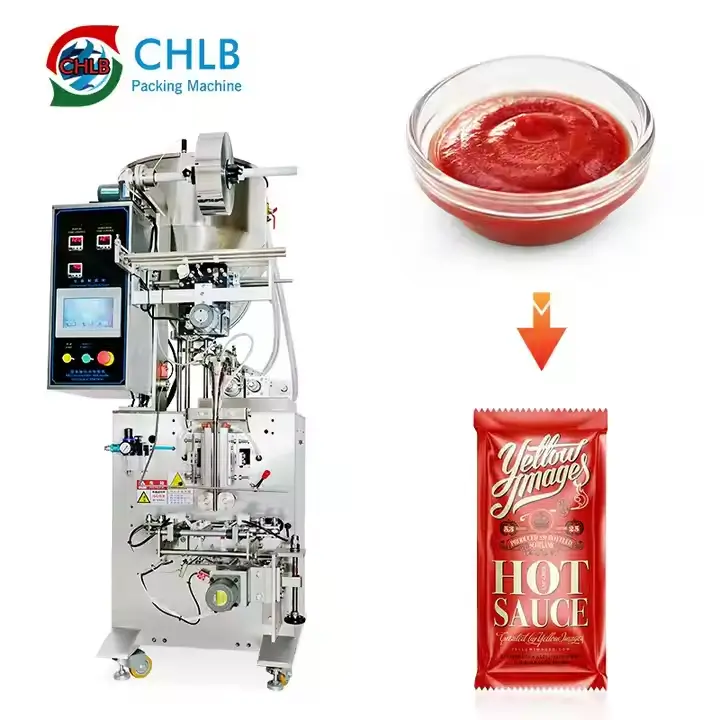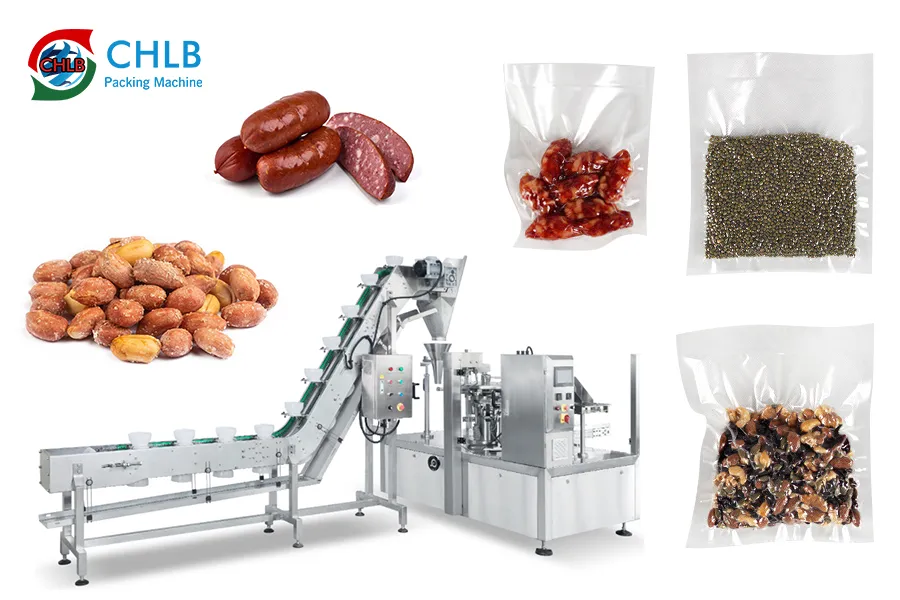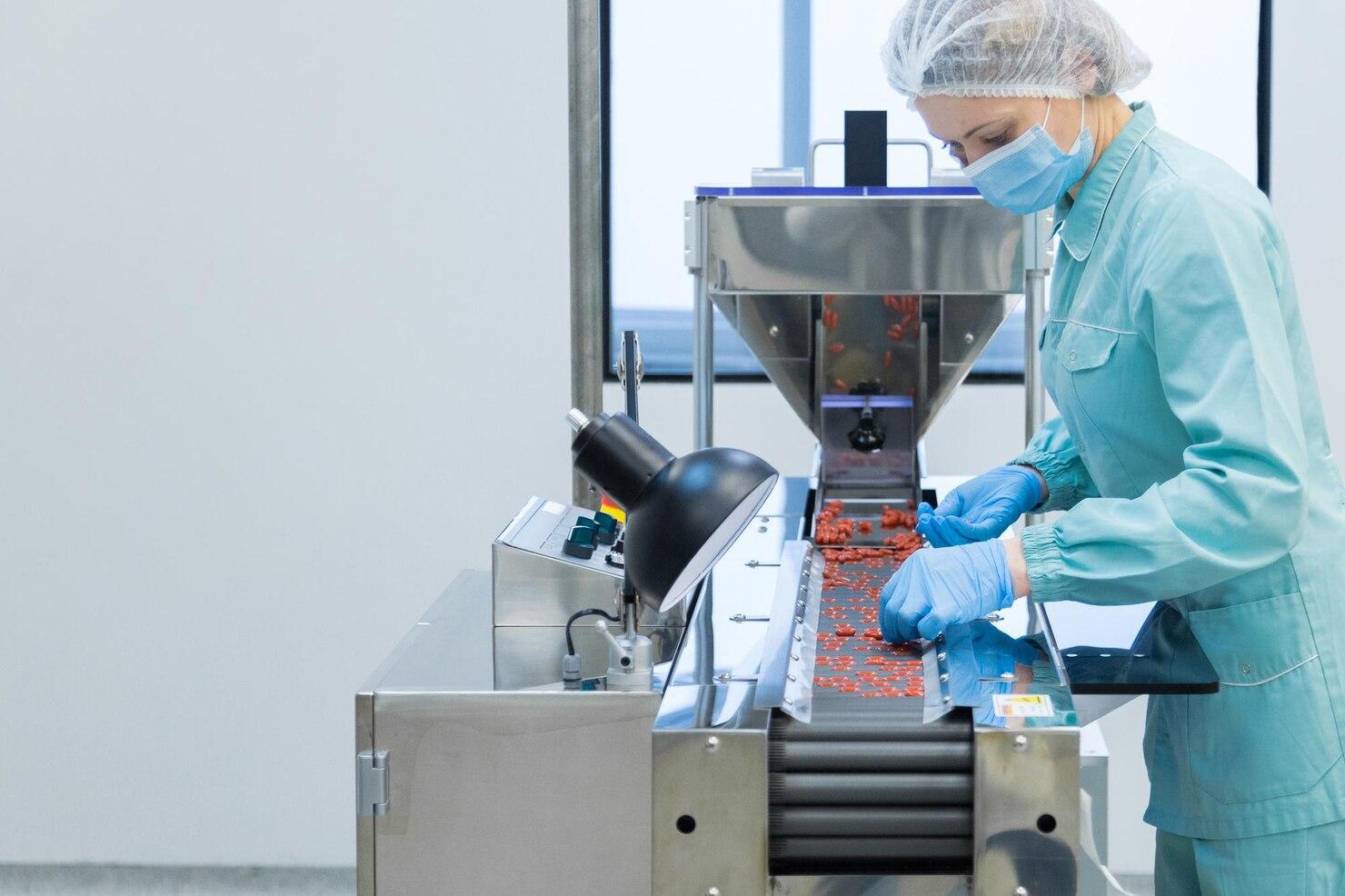Have you ever wondered why your frozen peas or ice cream stay so fresh and delicious in the freezer? The secret lies in the packaging. Proper frozen food packaging is crucial for maintaining the quality and safety of your frozen goodies. It prevents freezer burn, locks in flavor, and extends shelf life. Let’s explore the different types of packaging materials used in packaging for shipping frozen food.
Plastic Packaging
Plastic is a go-to material for frozen food packaging, and for good reasons. Plastic packaging is versatile, lightweight, and durable. It provides an excellent barrier against moisture and air, keeping food fresh and preventing freezer burn. 을 더한, it’s transparent, so you can see what’s inside without opening it.
There are several types of plastic used in frozen food packaging:
- Polyethylene (체육): Widely used due to its flexibility and resistance to cold temperatures.
- Polypropylene (PP): Known for its strength and durability, perfect for packaging that needs to withstand rough handling.
While plastic is convenient, it’s not the most eco-friendly option. It can take hundreds of years to decompose, contributing to environmental pollution. Recycling and reducing plastic use are essential steps toward a more sustainable future.
Cardboard Packaging
Cardboard is another popular choice, especially for products like frozen pizzas and meals. It is sturdy, recyclable, and can be easily printed with brand information. It’s also lightweight, which helps reduce shipping costs.
Different Types of Cardboard Packaging
- Corrugated Cardboard: Strong and durable, ideal for heavier frozen items.
- Solid Board: Thinner and lighter, perfect for individual meal boxes.
Cardboard is highly recyclable. Most curbside recycling programs accept it, making it an eco-friendly option. Always flatten boxes before recycling to save space and ensure they’re processed efficiently.
Shrink Film
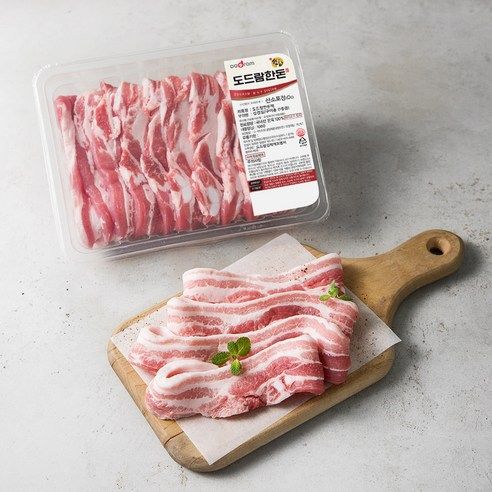
Shrink film is a versatile packaging material that’s often used to bundle multiple items together. It is a type of plastic film that shrinks tightly around objects when heat is applied. It’s commonly used to wrap multi-packs of frozen foods such as frozen chicken packaging. Shrink film offers excellent protection against moisture and contaminants. It’s also transparent, allowing consumers to see the product. 을 더한, it’s lightweight and cost-effective.
Flexible Bags
Flexible bags are popular for a variety of frozen foods, from vegetables to ready-to-eat meals. Flexible bags come in different styles, including stand-up pouches and pillow pouches. Stand-up pouches are great for space-saving storage and easy access, while pillow pouches are simple and cost-effective.
Aluminum Packaging
Aluminum is a robust and versatile material used in frozen food packaging. Aluminum is excellent at preserving food quality by providing a strong barrier against light, 수분, 그리고 공기. It’s also highly durable and withstands extreme temperatures.
Types of Aluminum Packaging
- Trays: Commonly used for ready-to-cook meals.
- Foil: Great for wrapping individual items or covering trays.
Aluminum is 100% recyclable and can be reused indefinitely without losing its quality, making it a sustainable choice.
Biodegradable Packaging
With growing environmental concerns, biodegradable packaging is gaining popularity. Biodegradable packaging breaks down naturally, 환경 영향 감소. It’s an eco-friendly alternative to traditional plastic.
Various Biodegradable Materials Used in Packaging
- Corn Starch: Used to make compostable bags and containers.
- Sugarcane Fiber: Converted into sturdy packaging materials.
게다가, many biodegradable packaging materials can be composted at home or through industrial composting facilities, returning valuable nutrients to the soil.
Vacuum Sealed Packaging
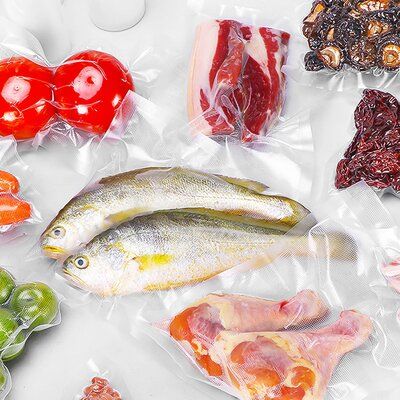
Vacuum sealing is a powerful method for preserving frozen foods. It removes air from the package, significantly extending the shelf life of frozen foods and preventing freezer burn. The process involves placing the food in a plastic bag, removing the air, and sealing it tightly. This creates a vacuum that keeps the food fresh. Vacuum-sealed foods can last up to 2-3 years in the freezer, far longer than traditional packaging methods.
Ziplock Packaging
Ziplock bags are a household staple for freezing food. They are easy to use, resealable, and come in various sizes, making them perfect for portioning and storing leftovers. To get the best results, remove as much air as possible before sealing and ensure the bag is fully closed. Label the bags with the date for easy tracking.
Paper Packaging
Paper packaging is a biodegradable option that’s increasingly used for frozen foods. Paper is renewable, recyclable, and compostable, making it an eco-friendly choice for environmentally conscious consumers. It’s also breathable, which can be beneficial for certain types of frozen food.
Different Types of Paper Packaging
- Waxed Paper: Coated with a thin layer of wax to provide moisture resistance.
- Parchment Paper: Used for its non-stick properties, ideal for baking-related frozen items.
Insulated Packaging
Insulated packaging is essential for maintaining the quality of frozen foods during transportation. It keeps frozen foods at a consistent temperature, preventing thawing and refreezing, which can degrade quality.
Different Types of Insulated Packaging
- Foam: Provides excellent insulation but is not environmentally friendly.
- Bubble Wrap: Combines cushioning with insulation properties.
Effective insulated packaging maintains the desired temperature for extended periods, ensuring the food remains frozen and safe to consume.
Freezer Safe Packaging
Freezer-safe packaging is specially designed to withstand freezing temperatures without breaking or degrading. Freezer-safe packaging materials are resistant to cracking and provide an airtight seal to prevent freezer burn.
Common Materials Used in Freezer Safe Packaging
- Plastic: Durable and resistant to low temperatures.
- Glass: An eco-friendly option, though heavier and more prone to breakage.
Look for packaging labeled as freezer-safe, and consider the type of food and storage duration when choosing materials.
Microwavable Packaging
Microwavable packaging allows you to heat frozen foods directly in the microwave. It offers convenience and saves time, as you can cook and eat from the same container.
Materials Used in Microwavable Packaging
- Plastic: Designed to withstand microwave heat without melting.
- Glass: Safe for microwave use and does not leach chemicals.
When using microwavable packaging, always check the packaging for microwave-safe labels and avoid using damaged or old containers to prevent chemical leaching and ensure even heating.
Collaborate With CHLB: Frozen Food Packaging Machine
To streamline your frozen food packaging process, consider collaborating with a reputable food packing machine manufacturer like CHLB. They offer advanced packaging machinesdesigned to meet your specific needs, ensuring efficiency and quality in your packaging operations.
결론
Choosing the right packaging methods and frozen food packing machine for frozen foods is essential for preserving quality, ensuring safety, and reducing environmental impact. From plastic to biodegradable options, there are numerous materials available, each with its unique benefits. By understanding these options, you can make informed decisions that suit your needs and contribute to a more sustainable future.
자주 묻는 질문
1. What is the best type of packaging for preventing freezer burn?
Vacuum-sealed packaging is highly effective at preventing freezer burn by removing air and creating a tight seal around the food.
2. Are there eco-friendly alternatives to plastic packaging for frozen foods?
예, biodegradable packaging materials like corn starch and sugarcane fiber, as well as recyclable options like paper and aluminum, are eco-friendly alternatives.
3. Can I reuse Ziplock bags for freezing food?
예, many Ziplock bags can be washed and reused. Just ensure they are thoroughly cleaned and dried before reusing them.
4. What should I look for in freezer-safe packaging?
Look for packaging that is labeled as freezer-safe, resistant to cracking, and provides an airtight seal to prevent freezer burn.
5. Is microwavable packaging safe to use?
예, as long as the packaging is labeled as microwave-safe and is not damaged or old, it is safe to use for heating frozen foods.

